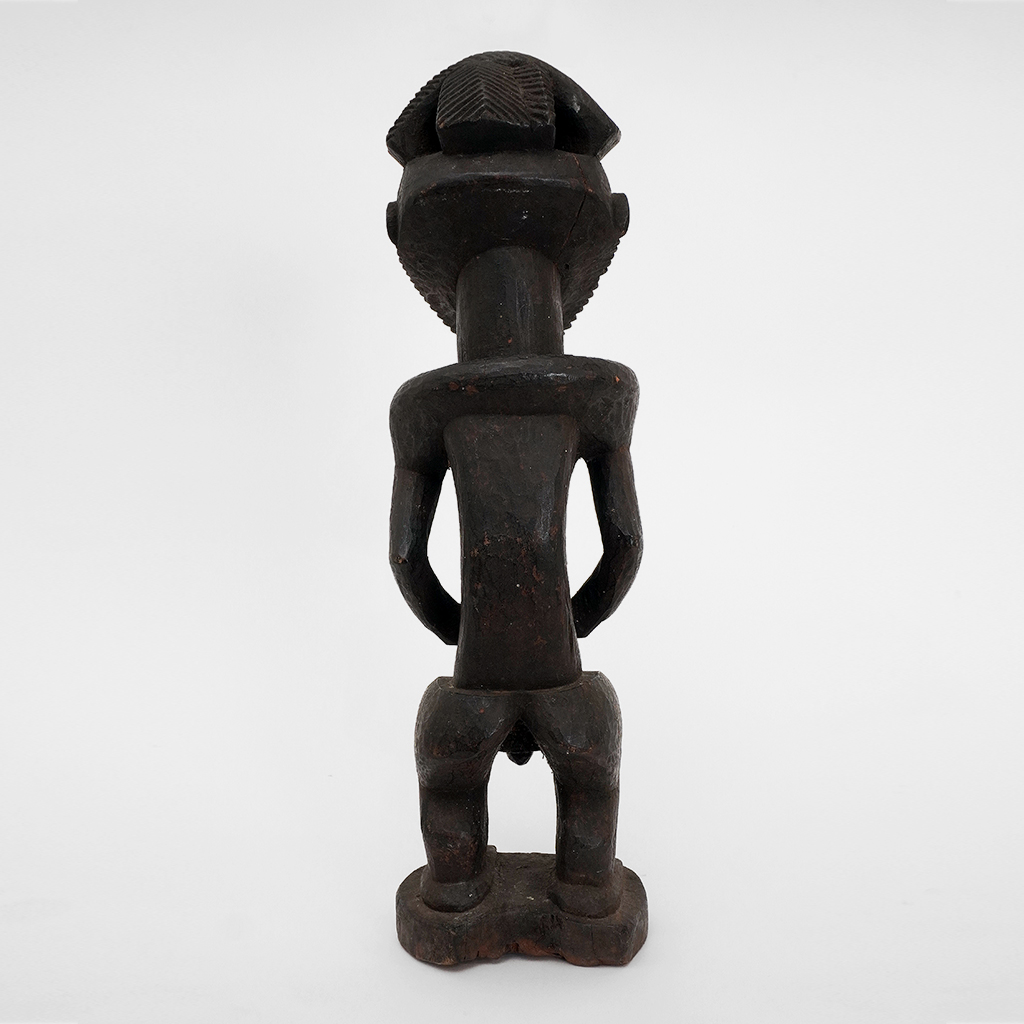STATUE KUSU
Référence :
Kusu statue depicting a tribal chief or the primordial ancestor of the Maniema region in eastern Democratic Republic of Congo (mid-twentieth century). Pfaff Collection.
Length : 5.91 in / 15 cm
Height : 20.47 in / 52 cm
Width : 5.51 in / 14 cm
Weigth : 6.61 lb / 3 kg
Contact us / Get in touch
Origin: Democratic Republic of the Congo
Period: Mid-twentieth century
Materials: Carved wood
Historical: The Kusu are a people living in the east of the DRC around the Maniema region.
Strongly influenced by their neighbours, the Songye and the Luba, their sculptures borrow from them the stylistic codes that characterize them. This statue in particular represents the primordial ancestor, to all the canons of Luba but also Songye sculpture: the general shape, the very cubist organization of the upper and lower limbs, right down to the very flat feet, almost integrated into the base. On the other hand, the trunk is rounder, with a prominent abdomen, a symbol of prosperity and fertility, like the sex, which is very marked.
Two characters can be used to assign it to Kusu:
– the headdress with mats arranged in cruciform scaffolding, leaving a void that the chief is said to have filled with the preserved seeds that would ensure the next year’s harvest;
– the notched beard inscribed with a triangular face.
Origin: PFAFF Collection, a French private collection built up by an airline pilot after the Second World War.
Marcel Pfaff (1910-1984), fighter pilot during the 2nd World War, demobilized in 1945, his friends of the time who are also his mentors, Dieudonné Costes and Maurice Bellonte, convince him to join civil aviation and the young company Air France ex-Aéropostale since 1933. For several years, it operated the Toulouse/Brazzaville route (with no less than 14 stopovers Dakar-Baloma-Conakry-Robertsfield-Abidjan-Accra-Lomé-Cotonou-Lagos-Douala-Libreville-Port Gentil-Pointe Noire-Brazzaville).
His many contacts on the spot allowed him to perfect his taste for African art and his attraction to strong pieces that were called fêtiches: Nkisi of the Songye, Nkondi with nails of the Bakongo, the Luba, LwaLwa, Yaka statues,… he quickly became very well known to the “antique dealers” of Brazzaville and Kinshasa (separated by the Congo River) who brought him the pieces directly to the airport – even if he was able to go twice to the East of the country, to Kisangani and Lubumbashi, which in the 50s and 60s represented a real adventure, in this country in full mutation, moving from the tutelage of Belgium to independence in often dramatic political shocks.
Later, he sailed the North Atlantic and Japanese routes, more compatible with his family life, becoming captain on the prestigious 747, before retiring in 1974.








